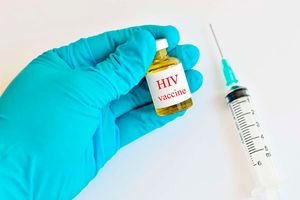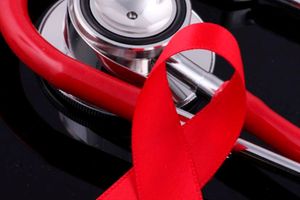HIV in children: risks, challenges and prevention

During childbirth and breastfeeding, a child can become infected with HIV.
What you need to know:
- HIV has no boundaries and affects all age groups equally, but it can be prevented through awareness about safe sex practices, abstinence from drug use, and using sterile needles for tattoos or piercings.
The key to preventing HIV from affecting more children is to educate up and coming generations about the virus, its causes, how it spreads, and how to protect themselves.
Vertical transmission can occur when a mother has HIV and while breastfeeding, passes the virus to her child through breast milk.
Children living with HIV go through a slew of issues, including poor health, lack of medication, lack of supplements, stigma, and prejudice, worrying about the future, and limited access to psychological support services such as counseling centres.
Many of these challenges are faced by children living with HIV worldwide. However, in developing countries where poverty is rampant and access to quality health care is scarce, these challenges are often exacerbated. In addition, a lack of awareness about HIV/AIDS means that many people do not understand how to support or interact with affected children.
Modes of transmission in children
Mother to child
During childbirth and breastfeeding, a child can become infected with HIV. This is known as vertical transmission.
Vertical transmission can occur when a mother has HIV and while breastfeeding, passes the virus to her child through breast milk.
The risk of vertical transmission varies depending on how much virus there is in the mother's blood. However, most children do not contract HIV vertically if their mothers receive proper treatment for the infection during childbirth or breastfeeding.
Vertical transmission is the primary mode of HIV transmission in children.
Sexual abuse
When a child is raped, the perpetrator can infect them with HIV.
This is known as sexual transmission. It occurs when a person has unprotected sex and gets infected by another individual already living with the virus.
Sexual abuse can cause trauma that lasts long after it happens, even if no physical injuries occur during penetration.
In some cultures, children are forced into early marriages, putting them at risk of contracting HIV through sexual intercourse.
Blood transfusion and organ transplant
Children can become infected with HIV if they receive a blood transfusion or an organ transplant from someone living with the virus.
This transmission type usually happens when there is not enough information about testing for HIV and other blood-borne viruses.
However, as the health sector develops, such cases have become few.
Through sharing injections and piercing objects
Children who abuse drugs or share needles with infected people can contract HIV.
This type of transmission is called parenteral transmission.
When children or teenagers get tattoos or piercings using unsterilised equipment, infection can occur.
Parenteral transmission is common in street children who are drug addicts, and in prison populations.
Symptoms of HIV/AIDS in children
Children rarely experience noticeable symptoms. However, when they do, the symptoms can include
- Low energy
- Stunted growth
- Slow development
- Fever
- Diarrhoea
- Low weight gain
- Frequently get sick
- Skin rashes
- Poor concentration
Treating the virus in children
There is no cure for HIV/AIDS, but treatment can help a child live a longer and healthier life.
Antiretroviral therapy (ART) is the primary treatment used to control the severity of the virus and keep it from progressing to AIDS.
When taken correctly, ART can reduce the amount of virus in a child's blood and help them to stay healthy.
Children should avoid risky behaviours such as premature sexual activity, drug abuse, and sharing needles. These habits increase the risks of new infections.




